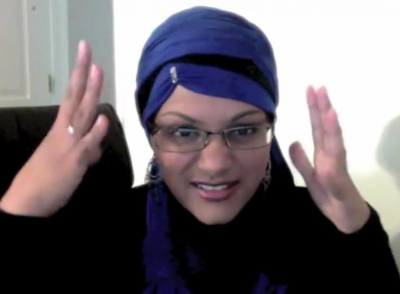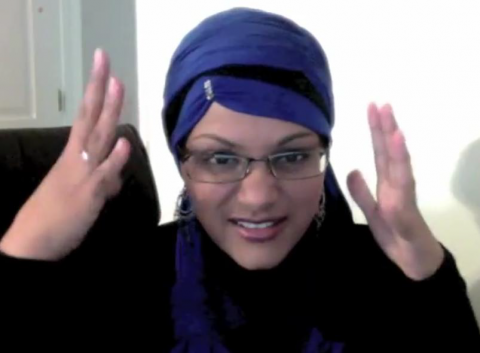
The choice of these particular accessories is by no means random
Als het aan de mainstream mode ligt, zijn we steeds uniformer. De eisen van de fashion world gaan echter niet voor iedereen op. Voor wie zich een andere identiteit wil aanmeten, en zich met die identiteit wil kunnen identificeren en geïdentificeerd worden, zal volgens bepaalde conventionele codes moeten werken, zogenaamde ‘How To’s’, of voorschriften. Zo kun je in een mum van tijd leren hoe je een Goth wordt, of hoe je een ware Facebook-ster wordt. Met de komst van het internet zijn de groepen op sociale media, websites en fora met dergelijke voorschriften of ‘How To’s’ als paddenstoelen uit de grond geschoten. Voor elke zogenaamde microhegemonie is er wel een website die voorschrijft wat men binnen die groep wel en wat men niet (aan)doet. Voor wie niet in Size Zero past, en ook niet in Size Six, zijn er bijvoorbeeld de sites zoals die van de fatshionista’s. Ook moslima’s die zich - om ethische of religieuze voorschriften – anders willen kleden, kunnen daar op het internet genoeg handleidingen vinden. In deze paper onderzoeken Blommaert & Varis het fenomeen van de Hijabista’s: de fashionista’s met hoofddoek, die de grenzen aftasten van de publieke perceptie van gesluierde vrouwen, zowel binnen de islam als erbuiten.
Paper
How to ‘how to’?
The prescriptive micropolitics of Hijabista
by
Jan Blommaert & Piia Varis
[email protected]
[email protected]
June 2012
1
How to ‘how to’? The prescriptive micropolitics of Hijabista
Jan Blommaert
Piia Varis
1 Introduction
Identities have always been subject to prescriptive ‘how to’ discourses; there is or has been no lack of guides and instructors for identities.1 The expansion of identity repertoires that we currently witness in the context of superdiversity naturally comes with an expansion of ‘how to’ literature, and the Internet is a prime vehicle for this. We see a mushrooming of self-help and ‘how to’ websites, videos and social media groups, all targeting specific modes of behavior and thus aimed at producing people recognizable as X or Y. From ‘how to be a Goth’ to ‘how to become a Facebook star’, over ‘how to trick people into thinking you’re good-looking’ and ‘how to be a metrosexual’: the list of potential targets for prescriptive discourse and illustration is endless and appears to respond to an increasing demand. YouTube, for instance, abounds with such material – how to dress like a skateboarder; how to be a good husband; how to be more feminine, etc.; ‘How to and Style’ is also, together with for instance ‘Music’, ‘Education’, ‘Sports’ and ‘Pets and animals’, one on the list of 17 main categories for browsing videos on http://www.youtube.com/.
These prescriptive ‘how to’ discourses have a clear scope and they operate on a series of assumptions that, recapitulating arguments developed elsewhere, we can sketch as follows. Acquiring and assembling identities are matters of perfection and exact precision; when appropriately practiced, they achieve recognizability for you as someone or a certain kind of person. In fact, identity work boils down to collecting and arranging a bundle of small details measured as to their appropriateness and ‘enoughness’, the ordered display of which generates recognizability as X or Y. Hence, say, dressing almost like a skateboarder is not quite good enough, as combining skater wear with, for instance, cowboy boots (at first sight a harmless detail) will ultimately lead to a failed projection of ‘skateboarder’ identity. One is ‘not enough’ of a skater and ‘too much’ of something else. Perfection and precision, thus, require sustained and disciplined focus on the detailed micro-practices of ‘getting it right’. These micro-practices, we argued earlier, are governed by ‘micro-hegemonies’: specific sets of norms that dictate the place of certain details in the ordered bundles that produce identities. Consequently, small changes in style – changing one detail sometimes – provoke big changes in identities, because such small changes rearrange and reorder the whole bundle. Every detail, thus, can be seen as in need of organization and ordering, and can so become an object of ‘how to’ discourse (Blommaert & Varis 2011, 2012).
In this paper, we focus on a phenomenon called the Hijabistas, and the online ‘how to’ discourse regulating this phenomenon. Hijab refers to the head cover worn by Muslim women, and to the ‘modest’ style of Muslim women in general. Hijabistas, then, are Muslim women who dress ‘fashionably’ and/or design fashionable clothes, while orienting towards what is being prescribed by their religion in terms of dress2. Being a hijabista can be seen as a sartorial technology of the self (Foucault 1988; see also Fadil 2011 for a discussion on not-veiling as an aesthetic of the self) that finds its expression in a complex of micro-practices revolving around recognizable emblematic values of fabrics, cuts, accessories and styles. This phenomenon is not exclusively visible on the internet, but still very prominent in different online environments: one can find blogs (e.g. http://www.hijabstyle.co.uk/), shop in online stores (e.g. http://www.hijab-ista.com/), watch YouTube videos (more on this below), ‘like’ Facebook pages (e.g. http://www.facebook.com/Hijabista), and engage in discussion with others on these and other sites.
‘Hijabista’ as a word has its roots in the older ‘fashionista’, which refers to a keen follower of fashion and/or someone who dresses up fashionably. ‘Hijab’ is not the only word that has been used to form such a ‘fashion portmanteau’ word – another example of this would be ‘fatshionista’ (see e.g. Diary of a Fatshionista3). As the name suggests, fatshionistas are people who go against the received idea that fashion is only for the ‘skinny’, and both hijabistas and fatshionistas can in fact be seen as transgressive modes of fashionista, as neither Muslim nor overweight women are seen as the ideal targets of the prescriptive discourse on acceptable Western female bodies regulating their desired shape and the ways in which they should be (un)covered.
The relationship between Islam, female fashion and individuality has in fact been fraught with conflicts. In 1994 an international row broke out when Chanel designer Karl Lagerfeld showed a dress on which verses from the Qur’an were printed. Globalized fashion, so it seemed, should not in any way be confused with the Muslim faith. Conversely, wearing the hijab has in Western societies quite consistently been branded as a kind of uniformization of female Muslims, and so associated to the denial of individual liberties, the absence of freedom to articulate female identities, and the oppression of Muslim women in general. It is seen as a remnant of pre-Modernity and pre-Enlightenment, which is why Atatürk banned the hijab from his modernized Turkish state and Shah Reza Pahlavi banned it from his equally modernized Iran. The same arguments motivated a hotly contested debate in France in the 1990s and in several other European countries since then, leading to the call by Geert Wilders in The Netherlands to introduce a special tax for women who insist on wearing the hijab. A large and growing popular and media literature documents such conflicting interpretations. Hijabistas, thus, assume a place in an area of controversy and conflict. Their sartorial practices need to balance between different worlds of interpretation, none of them socioculturally and politically innocent (see also Sweeney 2011).
‘Western’ fashion is designed to cover specific kinds of bodies, and to a large extent cover them only minimally – hence the exclusion of bodies that are seen as non-fitting due to their ‘wrong’ shape, as well as the ‘awkward’ mix with bodies that are not available for the generous display of bare skin or are not by default aiming at attracting (often erotically interpreted) attention to themselves. Thus the emergence of niche fashionistas such as fatshionistas and hijabistas, with specific micro-hegemonies entailing specific micro-practices of self-fashioning and self-consciousness.
These specific micro-practices play into the creation of what we have elsewhere (Blommaert & Varis 2012) called ‘culture as accent’ – a space for uniqueness and individuality within overwhelming pressures towards conformity. One’s accent – the details that contribute to the making of one’s unique identity – are often the result of very complex articulations where even seemingly contradictory identity discourses are brought together for the production of the totality that is ‘my (unique) accent’. Articulation, in the words of Stuart Hall (1986: 53, emphasis original), is (…) the form of the connection that can make a unity of two different elements, under certain conditions. It is a linkage which is not necessary, determined, absolute and essential for all time. You have to ask, under what circumstances can a connection be forged or made? The so-called ‘unity’ of a discourse is really the articulation of different, distinct elements which can be rearticulated in different ways because they have no necessary ‘belongingness’. The ‘unity’ which matters is a linkage between the articulated discourse and the social forces with which it can, under certain historical conditions, but need not necessarily, be connected.
Our accents are the result of specific articulations, and all of this is tied into consumer culture and the consumption and display of certain consumer commodities. As Entwistle (2000: 124) puts it, in the “production of the ‘body beautiful’”, “the modern ‘care of the self’ has become one of the defining features of consumer culture. Rather than imposed on us, these practices call us to be self-conscious and self-disciplining.” The preoccupation with the micro-practices of self-in-consumerism is very prominently manifest in e.g. the change of style according to occasion, year and season (hence, for instance, the fear of being a target of the damning ‘that is so last season’ remark for anyone who wishes to be stylish). As for the case of hijabistas, Jones (2007: 211) in her discussion on Islamic fashion in Indonesia points to these consumerist articulations as “an index of two apparently contradictory or mutually exclusive phenomena, a rise in Islamic piety and a rise in consumerism.” However, here we should be wary of constructing any essentialist fundamental break between ‘Western’ fashion and ‘Muslim’ clothing and of implying the impossibility of combining these two. Just because the mix is not necessary does not mean that it is impossible, and, as we shall see below in more detail, our late modern consumer culture indeed enables and encourages the articulation of a whole range of identities, each with their own defining accent.
The product of engaging in specific practices of articulation is a tailored self – in the case of different fashionistas very literally so. This means striking a balance between ‘standing out’ and ‘fitting in’: “We can use dress to articulate our sense of ‘uniqueness’ to express our difference from others, although as members of particular classes and cultures, we are equally likely to find styles of dress that connect us to others as well” (Entwistle 2000: 138, 139). It is, as said above, a trade-off between conformity and uniqueness. Striking this balance is not always easy, for one may – either accidentally or on purpose – produce too strong an accent that will be the target of criticism, ridicule etc. We will start by looking at corrective ‘how to’ discourses on unacceptable accents.
2 How (not) to be hijabista
The wish to be recognizable as someone and as a certain kind of person is part of the articulation of one’s accent, as the failure to be recognizable as X may lead not only into non-recognition, but to the wholesale rejection or disqualification of one’s identity (‘misrecognition’, in Bourdieu’s sense). The first step in most of the how-to literature is therefore that of demarcation: defining what is in and what is out, what is authentic and what is fake, what is enough in the way of accent and what is not.
This is the case also with hijabistas. The three images below, found on different online forums, give a taste of the kinds of ongoing battles over acceptable accents and their articulations.
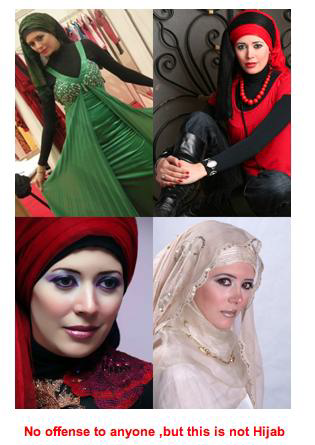
Image 1. http://islamfashionandidentity.blogspot.com/2010/02/does-hijab-has-to-be-black-is-it-must.html
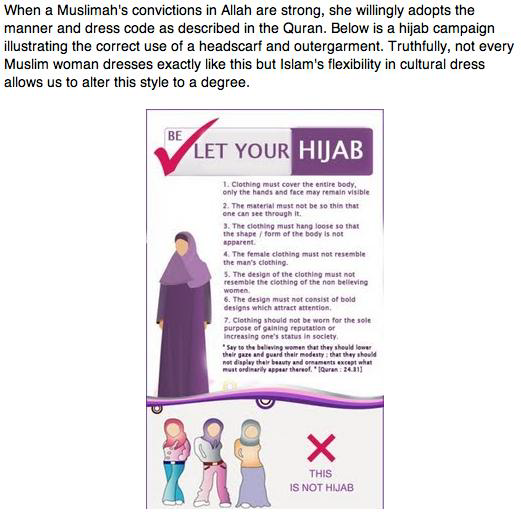
Image 2. http://www.muslimness.com/2009/11/whats-your-hijab.html
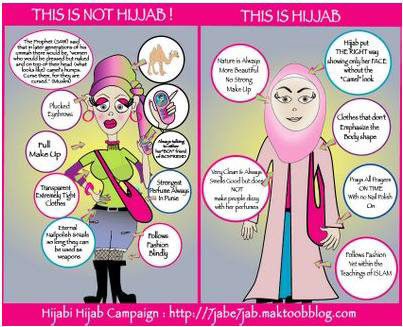
Image 3. http://www.turntoislam.com/forum/showthread.php?t=47697
When it comes to ‘how to’ discourses on identities, these discourses are always accompanied by a ‘how not to’ component explicitly or implicitly embedded in the ‘how to’. The prescriptive images presented above are all very explicit, and clearly the objection here is to the stereotypically ‘Western’ fashion element: these images unequivocally reject the ‘Western’ ideal of female bodies (wear make-up, show your figure and preferably some skin, follow fashion trends, etc.), and they guide the viewer in ‘how to do it instead to get it right’. Revealingly, the text accompanying Image 2 refers to the modification of the template for the prescribed style ‘to a degree’ – pointing directly to the ‘unique’ recognizability that should be part of one’s self-articulation, while not being overwhelmed by too strong an accent.
Here we also see how the notion of authenticity is relevant in understanding accents: indeed, Entwistle (2000: 121) points to a whole ‘moral universe’ in which “dress and appearance are thought to reveal one’s ‘true’ identity”. Here, that ‘true’ identity would be that of a religious, modest self projected onto a fully ‘veiled’ body. However, evoking different centers of recognition – always a potential ‘risk’ in articulating one’s accent – becomes a problem here, as too strong a fashion-conscious (‘Western’?) accent potentially overrides the ‘true’ self that is supposed to be visible in the articulation of one’s identity. Crossing the boundaries of expected authenticity is possible and tolerated, but the limits of that are strictly policed. As we shall see next, details are indeed of essence in the successful articulations of (hijabista) identities.
3 The pink marshmallow look, the hipster hijab and other accents
In today’s global supermarket of identities, the internet is full of instructions on how to attain certain accents, and the fracturing of identities is visible in the immense range of items and commodities that are made to seem important in one’s articulation. As noted earlier, constructing oneself revolves around arranging an ordered cluster of details; permutations of such clusters enable a virtually endless range of ‘small’ identities to be produced.
We can view the ‘how to’ discourse, here in the case of the hijabista, as a continuum, where at one end of ‘how to’ hijab, we find basic, generic instructions. Hijabista videos on YouTube feature this whole range. For instance the video “How to wear hijab’4 gives a detailed description on how to wear the headscarf, specifying four different types of instruction: how to wear a square hijab, an oblong Shayla, a one-piece Shayla, and a Al-Amira hijab. This is quite general, as we find out when we start examining the ways in which the hijabista can be accessorised to achieve certain stylised identities. Getting more specific, we find, for instance, the following: ‘Criss Cross hijab style/tutorial’5; ‘Hijab Tutorial Style for Work/High School/College – A Requested Look’6; ‘Hijab Style Tutorial Using Lace Headband and a Butterfly Brooch’7 (with the caption pointing out that ‘The lace headbands and butterfly brooch are all from H&M’); ‘Hijab style/tutorial – The Pink Marshmallow Look’8; ‘Hijab/Hijaab Tutorial Style-Two Arabian Princess Looks’9; ‘Hijab tutorial: how to wear a headscarf/hijab modern style with a flower.wmv’10; ‘Hijab tutorial for glasses/sunglasses’11; ‘StyleCovered- hijab tutorial pashmina with accessories’12; ‘Pleated caterpillar style Hijab Tutorial By Ruby Ahmed’13; ‘The Roley Poley Style Hijab Tutorial’14; ‘Hijab Tutorial: Funky Layered Look (Requested)’15; ‘Everyday Hijab Style/Hoodie Hijab Tutorial’16 – and so on, and so on, ad infinitum.
Being a hijabista is thus by no means a single, uniform thing, and the ‘how to’ discourse illustrates the infinite possibilities provided by stylisation through the consumption and display of different commodities to suit certain occasions (‘everyday’; ‘work/high school/college’) and to produce certain accents (‘Arabian Princess’; ‘The Pink Marshmallow’). The details and artefacts used give one one’s accent, and open up whole universes of meaning, pointing to certain identities and lifestyles. Hence also – given that keeping up with fashion trends requires the spending of sometimes great amounts of money – we now see that the phenomenon of ‘frugal fashionistas’ has appeared (e.g. ‘The Frugal Fatshionista’17). As described in the Hijab Savvy blog, “I’m really excited to be sharing this new series with all of you! The Frugal Hijabista is for the woman who enjoys – yes I said actually enjoys saving money and finding a bargain.”18. Being frugal is, in fact, about enjoying being frugal, i.e. not something dictated by economic necessity, but a lifestyle actively chosen. Another such example is the eco-hijab style which “fuses Muslims’ ‘green’ values with with [sic] their visual identity of modest clothing, for example organic hijabs made from bamboo.”19
All these styles call for the acquisition and display of certain commodities, and the infinite fracturing into different styles such as ‘romantic, girly look’, ‘the urban chic style’20 etc. is also visible in the images below, as certain consumer items and the particular way in which they are worn evoke specific identity labels and (implicit) identity and lifestyle discourses. Witness the hipster hijabi from London:
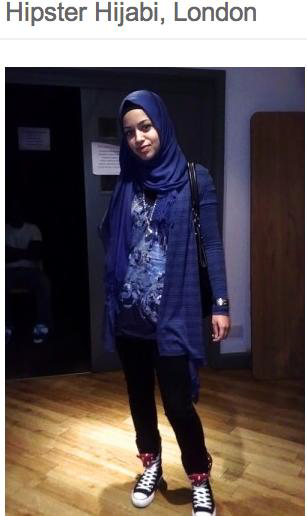
Image 4. Hipster style http://hotchicksinhijabs.com/
And the gothic hijabista from Finland:
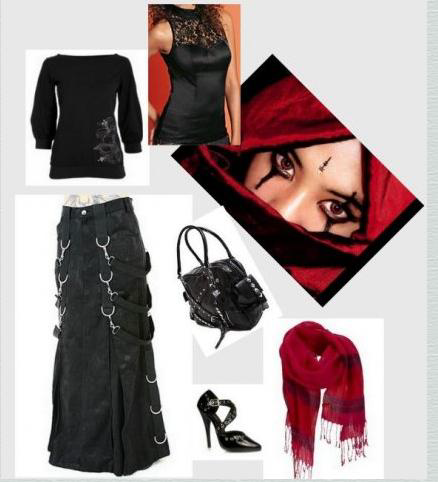
Image 5. Gothic style http://vaatekaappi.vuodatus.net/
As we have seen above, accents are (sometimes very heavily) accessorised, and it is clear that the accessories that contribute to the creation of a hipster accent would not work in the making of the gothic one, and vice versa. For the hijabista, the accessorising can mean minute details such as pins:

Image 6. http://pinzpinzpinz.co.uk/
Just by looking at the list, we can conjure up images of different hijabistas: snowflakes, Swarovski crystal pins, hearts and Blinging Pinz all evoke different accents. All of these details provide alternative alignments with recognizable styles in public. And such details must be brought ‘in order’, so to speak, by means of a micropolitics of the self: a delicately organized collection of nonrandom forms of behavior producing that specific ‘self’. We shall now have a look at a video that presents all the detailed practices of arrangement needed for a certain kind of style, for a certain kind of occasion – requiring a certain kind of accent.
The video is titled “OOTD #1 Date Night!”21, OOTD referring to ‘Outfit of the Day’. The young woman presenting the outfit is “going out with family and a dinner out with her ‘hubby’” – hence a specific ‘date night’ outfit, naturally composed of specific details and consumer items. She starts the video by introducing her headwear, and the constituent parts of the hijab (Image 7).

Image 7. The constituent parts of the hijab
This is followed by a detailed explanation on what else she is wearing, starting with the top – a ‘babydoll turtleneck’ (Images 8 and 9).

Image 8. The hijab worn with a babydoll turtleneck

Image 9. The babydoll turtleneck
She then points to the accessories she is wearing – earrings and a ring (Images 10 and 11)

Image 10. Accessories: earrings

Image 11. Accessories: a ring
The choice of these particular accessories is by no means random, as illustrated by Image 12.

Image 12. Keeping it simple with the accessories
Here, the focus on the accessories and ‘keeping it simple’ with them, because “I have kind of a lot of stuff going on up here. So everything else is simple and I’m wearing blue jeans.” The specific head cover worn, then, dictates the accessories worn. The blue jeans already mentioned are also qualified not simply as ‘blue jeans’, but as “just boot cut so not too tight” (Image 13).

Image 13. Blue jeans (“just boot cut so not too tight”)
Neither does the babydoll turtleneck pass without further elaboration (Image 14):

Image 14. “Baby doll turtle neck comes up to my knees”
Finally, we return to the head wear, which is qualified as ‘medium-size’ (Image 15):

Image 15. Medium-size scrunchie for volume
And we end by zooming into the ‘medium-size’ head wear that is there ‘for volume’ (Image 16):

Image 16. Zooming in on the (medium) volume
Importantly, we also get to know how to acquire (some of) these items to be able to create this ‘date night outfit’ for ourselves:
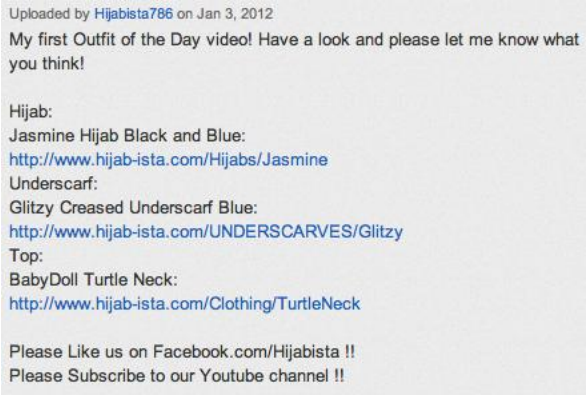
Image 17. Where you can buy the pieces of clothing shown on the video (caption to the video)
Having watched this video, we now know how to create a ‘date night outfit’ that is ‘hijabista’. On the surface this does not seem like too complicated a creation, but as we learn throughout the video, there are details one is supposed to pay attention to (the blue jeans are ‘not too tight’; the head cover is ‘medium’; the accessories worn should be few). Getting it right requires the acquisition of certain consumer commodities that are then ordered in a particular way for a particular effect – and in this as in many other cases online, these items are conveniently made purchasable by just a click of the mouse – one’s specific and desired identity is only a link away. Implied in all of this is of course meticulous care of one’s self and attention to detail such as what specific amount of accessories will be successful with a particular head scarf. In ‘how to’, knowing what is too much and what is too little is crucial.
4 Conclusion
Although the demands of recognizability and the identity templates of consumer culture keep our accents in check, in a superdiverse world of global flows, articulations and identities become less and less predictable. The ‘super-semiotics’ of the internet provide for the easy creation and fast publication of potentially infinite creation of accents – and infinitely fractured range and scope of ‘how to’.
While the emphasis on hardly noticeable details is by no means restricted to the Hijabistas – we see it rather as a constant element in the micropolitics of identity, see Blommaert & Varis (2012) – it surely helps Hijabistas to maneuver the field of conflict and contestation in which their practices are set. As noted earlier, the hijab is the object of heated debates, and while the Hijabistas clearly violate the demarcation of ‘hijab versus not hijab’ imposed from within certain branches of Islam, they also clearly violate public perceptions of Western modernity and male-female equality.
References
Blommaert, Jan & Piia Varis 2011. Enough is enough: The heuristics of authenticity in superdiversity. Tilburg Papers in Culture Studies, Paper 2.
http://www.tilburguniversity.edu/research/institutes-and-research-group…
Blommaert, Jan & Piia Varis 2012. Culture as accent. Tilburg Papers in Culture Studies, Paper 18. http://www.tilburguniversity.edu/research/institutes-and-research-group…
Brenner, Suzanne 1996. Reconstructing self and society: Javanese Muslim women and “the veil”. American Ethnologist 23 (4), 673-697.
Entwistle, Joanne 2000. The fashioned body. Fashion, dress and modern social theory. Cambridge: Polity.
Fadil, Nadia 2011. Not - / unveiling as an ethical practice. Feminist Review 98, 83-109.
18
Foucault, Michel 1988. Technologies of the self: A seminar with Michel Foucault (Martin, L.H., H. Gutman, P.H. Hutton, eds.). Amherst, MA: University of Massachusetts Press.
Hall, Stuart 1986. On postmodernism and articulation: An interview with Stuart Hall. Journal of Communication Inquiry 10, 45-60.
Jones, Carla 2007. Fashion and faith in urban Indonesia. Fashion Theory 11 (2-3), 211-232.
Sweeney, John A. 2011. Burqas in back alleys: Street Art, hijab, and the reterritorialization of public space. Continent 1 (4), 253-278.
Links:
4 http://www.youtube.com/watch?v=L1tYfBNfqgU
5 http://www.youtube.com/watch?v=Knb6tJ3N9-s
6 http://www.youtube.com/watch?v=pEwP4h6gxn8
7 http://www.youtube.com/watch?v=3kyEYcyMTwA
8 http://www.youtube.com/watch?v=9et52qHKVTY
9 http://www.youtube.com/watch?v=ipgjgKGUqEQ
10 http://www.youtube.com/watch?v=KwRu5ljtD-E&feature=fvst
11 http://www.youtube.com/watch?v=1ZfNqhZEC6s
12 http://www.youtube.com/watch?v=sRpzZhxbm0U
13 http://www.youtube.com/watch?v=fSq9RqIs7pE
14 http://www.youtube.com/watch?v=hs9sTBANRgs; “Well it’s the turban style of wearing the hijab but more bulky and more loose. Works well with the crinkly type rectangular scarves. Inspired by the african dead dresses”.
15 http://www.youtube.com/watch?v=N2u_iXRG9KY
16 http://www.youtube.com/watch?v=mCeZriQma8I
17 http://rhapsodani.com/thefrugalfatshionista
18 http://hijabsavvy.com/category/frugal-hijabista/, emphasis original
19 http://www.greenprophet.com/2011/01/eco-hijabs-on-rise/
20 http://fashioningfaith.blogspot.com/
21 http://www.youtube.com/watch?v=xz-WEBv8K_w
